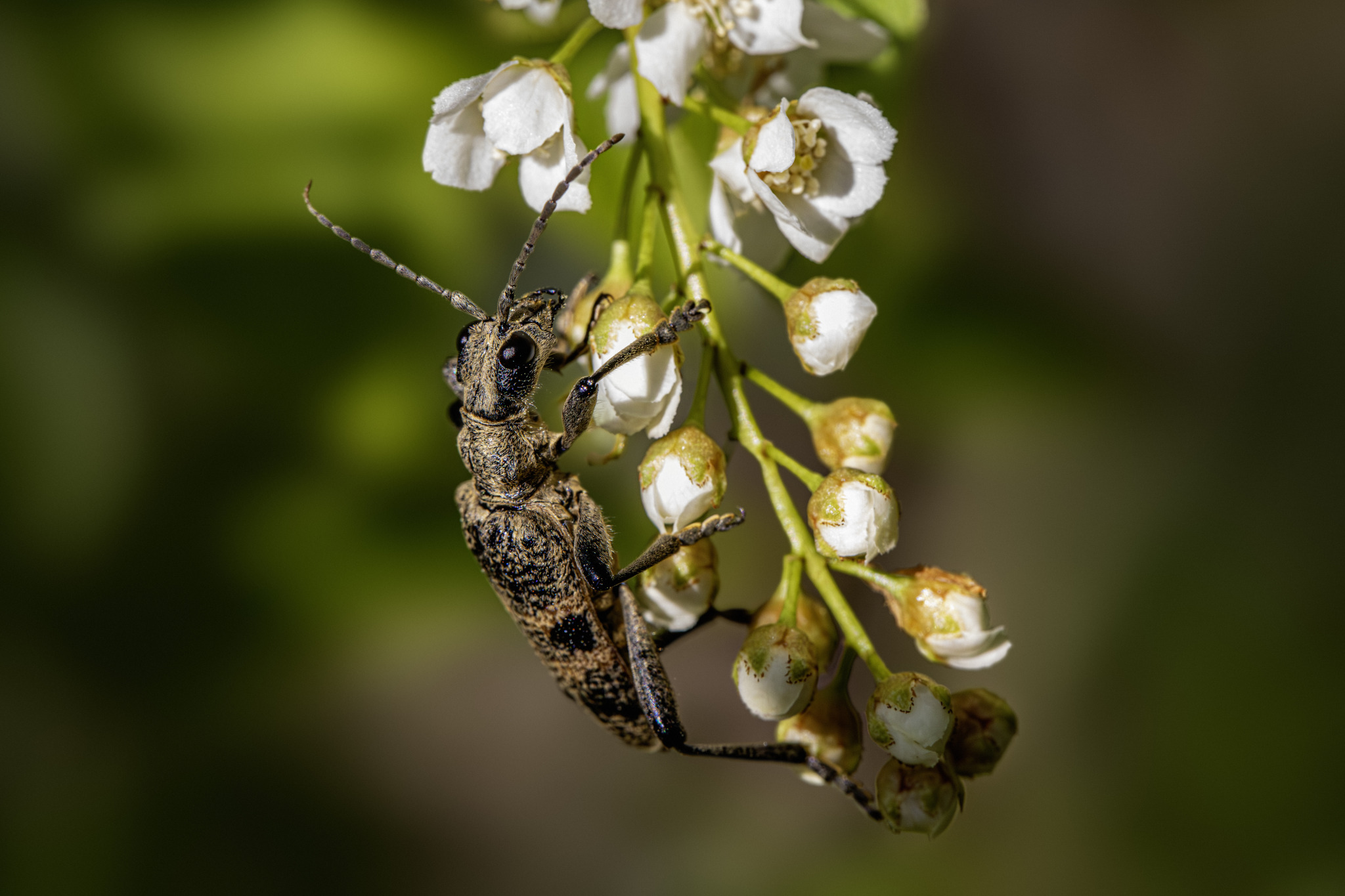The Black-spotted Longhorn Beetle (Rhagium mordax) is a visually striking insect from the family Cerambycidae, known for its elongated body and distinctive markings. This beetle is often found in wooded areas and plays a key role in forest ecosystems by aiding in the decomposition of dead wood.
Physical Description
- Size:
- Body length: 12–22 mm.
- Coloration:
- Brownish body with prominent black spots on the wing cases (elytra).
- Covered in fine, short hairs, giving it a slightly velvety appearance.
- Long antennae, characteristic of longhorn beetles, are about half the body length.
- Shape:
- Elongated and slightly flattened body.
- Pronotum (area behind the head) features a small central spine and ridges.
Behavior
- Feeding:
- Adults feed on nectar, pollen, and sometimes sap.
- Larvae are wood-borers, feeding inside dead or decaying hardwoods.
- Activity Period:
- Adults are active from April to August, with peak activity in late spring and early summer.
- Flight:
- Good fliers and often seen basking on sunlit wood or tree trunks.
Habitat
- Found in forests and woodland areas, particularly where decaying trees are present.
- Common around:
- Deciduous trees, especially oak, beech, and birch.
- Log piles and fallen branches.
Life Cycle
- Eggs:
- Laid in cracks or crevices of dead or decaying wood.
- Larvae:
- Whitish, legless grubs that bore tunnels in wood, aiding in decomposition.
- Develop over 1–3 years, depending on environmental conditions.
- Pupae:
- Pupation occurs inside the wood tunnels.
- Adults:
- Emerge in spring or early summer, living for a few months.
Distribution
- Widely distributed across Europe and parts of Asia, particularly in temperate regions.
- Prefers areas with ample decaying wood.
Conservation Status
- Classified as Least Concern due to its adaptability and widespread presence.
- Threatened locally by the removal of deadwood and habitat destruction.
Ecological Role
- Decomposition:
- Larvae contribute to the breakdown and recycling of dead wood in forest ecosystems.
- Pollination:
- Adults, while feeding on flowers, contribute to pollination.
- Food Source:
- Both larvae and adults serve as prey for birds, small mammals, and predatory insects.
Interesting Facts
- Camouflage: Its mottled coloration helps it blend into bark and decaying wood, protecting it from predators.
- Ancient Wood Dwellers: Like many longhorn beetles, it has evolved to specialize in decomposing trees, playing a vital ecological role.
- Distinctive Spots: The black spots on its elytra help distinguish it from similar longhorn beetles.
Summary
The Black-spotted Longhorn Beetle (Rhagium mordax) is an essential component of woodland ecosystems, aiding in nutrient cycling and supporting biodiversity. Its striking appearance and ecological significance make it a fascinating subject for entomologists and nature enthusiasts alike. Ensuring the availability of deadwood in forests is vital for the continued survival of this species and many others dependent on similar habitats.
Views: 1311
Subscribe to the newsletter:
